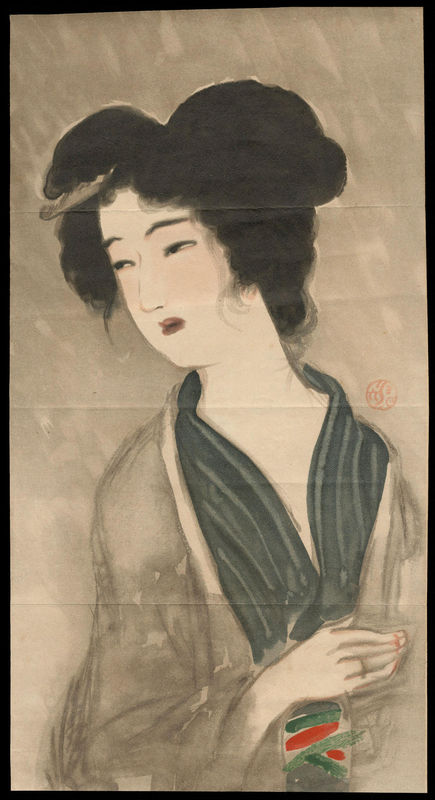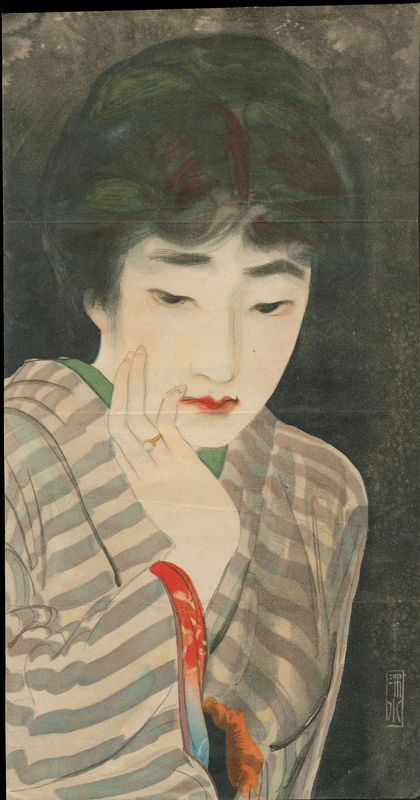


Original email message:
Dear Dr. Walker,My reply:I have just received the two lithographs "Applying Lipstick" and "A Worried Look" of the artist Ito Shinsui that I bought you last week. But, when I inspected them with magnifying glass I watched perplexed that the drawing was done with the typical dot-modern printers. How is it possible in a lithograph of a century ago?
When I first started collecting Japanese prints I tried to determine the visual differences between machine and lithographic printing. Many of the Taisho-era non-woodblock kuchi-e were listed on dealer and auction sites as either being lithographs or offset/machine printings yet I often could not tell the difference between some of them with the naked eye.
After some investigation what I found was rather interesting: there appeared to be roughly three varieties of printing technique

"A hybrid of litho and offset printing" exhibits characteristics of both (1) and (2) above, i.e., both geometric and "random" dot patterns, with diffused areas containing no dots at all. I found this category quite interesting because I had never heard of such a printing technique before. I believe the technical term for this category of printing process is "offset lithography". Many of the Taisho-era non-woodblock printed kuchi-e are listed by dealers as being "lithographs", and as a non-expert in printing technology I have adopted their classification, but having examined the prints concerned they almost always exhibited the characteristics of (3) above, i.e., mixed litho and offset printing characteristics. If you check the following links you will see such prints listed as lithographs. If you look at their zoomed versions you can see that they usually contain geometric dot patterns to some extent:
here (this is my website but the information comes from an auction listing).
Finally, the Taisho kuchi-e book "Dangerous Beauties and Dutiful Wives" focuses entirely on non-woodblock kuchi-e, and they discuss the printing processes for these kuchi-e in some detail. Many of the lithographic processes mentioned in the book are actually a hybrid, including "three-colour chromo-litho", Marinono rotary printing, Rubel Rotary press, rotary offset press, planographic offset lithography, etc. These terms all relate to lithographic printing, not offset printing (which is discussed elsewhere in the book).
By the way, I write a little about offset and litho/offset printing at the bottom of this webpage:
http://www.ohmigallery.com/DB/Artists/Ito_Shinsui.asp
How is it possible in a lithograph of a century ago?
Offset printing arrived in Japan in the Taisho era actually, and there are many purely offset-printed kuchi-e.
Thank you and best regards from Japan.
Ross
| Back to Research & Articles | Back to Koitsu.com Home | Contact | Back to Ohmi Gallery Home |